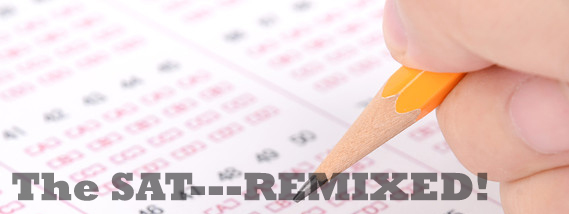
 According to the New York Times, the forever dreaded SAT test has finally been revamped! These changes are set to take permanent effect within the next two years. The College Board determined that the SAT needed to undergo major revisions in order to accommodate this new generation of young people going into four-year colleges and universities. It was apparent to test developers that the achievement gap was too wide and that socioeconomic factors were mostly to blame.
According to the New York Times, the forever dreaded SAT test has finally been revamped! These changes are set to take permanent effect within the next two years. The College Board determined that the SAT needed to undergo major revisions in order to accommodate this new generation of young people going into four-year colleges and universities. It was apparent to test developers that the achievement gap was too wide and that socioeconomic factors were mostly to blame.
The College Board has come to a very valid realization because a specific town or city will be more advantageous than another but it also depends on the high school that the student comes from. For example, Baltimore Polytechnic Institute from the Baltimore City school district is an exceptional school despite being associated with Baltimore City (which is known for its high level of criminal activity). Statistics and data show that students are more likely to perform better at Baltimore Polytechnic Institute than other schools that are not based on science, math, or engineering like Baltimore Institute. I noticed in areas where there are more minorities, there is also less access to more modern technologies, which introduces the ever growing digital divide in many urban cities across the country. Many newer schools are equipped with modern technologies such as Apple products, tablets and 21st Century learning labs whereas older more seasoned schools have outdated PCs or Windows software.
The most recent change that the SAT had undergone was in the year 2005 when the score format was shifted from 1600 to 2400. An essay portion was also added. The 2400 score maximum remains the same but the composition gets a make-over. There will be three sections: evidenced based reading, writing, and math, and an OPTIONAL essay. Incorrect answers will no longer be counted against the student, vocabulary words and math problems will be more simplified. The simplified sections will require more problem-solving, analytical, and critical thinking skills.
The College Board believes that some students are better at taking tests than others. This is because some students have mastered the art of taking a standardized test. They may not necessarily be “book-smart”, but they have figured out how to get the right answers in a short amount of time. Some students might take more time to solve problems but may know all the answers and students may suffer from test anxiety. These many changes makes one wonder how different the college admission process would have been for me just a couple years ago. Would I be at a different, more prestigious school? Could I have gotten a higher score on the SAT? Would it have even made a difference at all?
Nonie Okoye serves as a Contributor Lead at The Gem Project, Inc. Okoye is a Rutgers University student studying biology and the arts. She resides in New Jersey. Follow her on Twitter at @LoveGemNonye.
Edited by Deja Jones, M.ED, Director of Communications. Follow her on Twitter @Simply_Dej.

